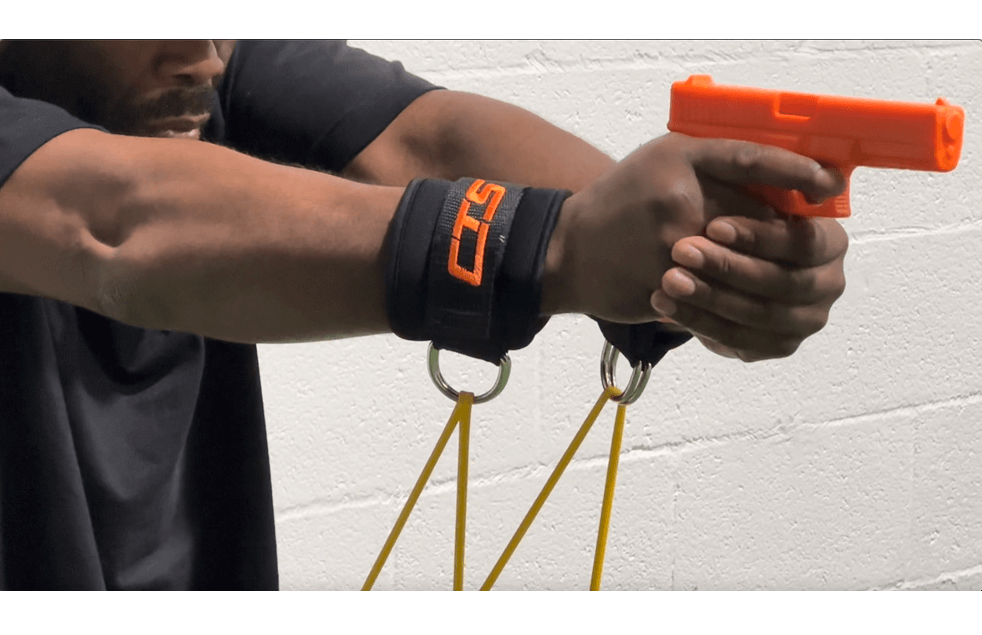Blog
Strength Training for Tactical Excellence: Harnessing Flex Band™ Technology

In the world of tactical training, strength is not just about lifting heavy weights. It’s about developing functional strength that directly translates to real-world scenarios, especially for those in the military, law enforcement, or security fields. This is where Flex band™ technology comes into play, offering a dynamic way to enhance your strength training routines. Here’s a quick guide on how to incorporate Flex band™ technology into your strength training, particularly focusing on muscle groups crucial for weapon handling and retention.
Understanding Flex Band™ Technology
Flex bands, unlike traditional weights, provide variable resistance. This means the resistance increases as the band stretches. This is beneficial in mimicking real-life scenarios where force and resistance aren’t always constant. They are portable, versatile, and can be used to target specific muscle groups or perform full-body workouts.
Key Muscle Groups for Tactical Training
- Forearm and Grip Strength: Vital for weapon retention and control. Exercises like Flex band™ wrist curls and reverse curls strengthen these muscles.
- Upper Body Strength: Particularly the shoulders, chest, and back. These muscles are crucial for weapon handling, especially during long periods. Flex band™ exercises like band pull-aparts, chest presses, and rows are effective.
- Core Stability: A strong core ensures better balance and overall strength, which is essential in tactical situations. Planks with Flex band™ resistance or rotational movements can fortify the core.
- Lower Body Power: Strong legs and glutes are essential for quick movements and maintaining a stable stance. Squats, lunges, and hip thrusts with Flex bands™ are excellent for building lower body strength.
Incorporating Flex Bands into Strength Training
- Start with a Warm-Up: Perform dynamic stretches and warm-up exercises without the Kinetic Flex™ Trainer. This prepares the muscles and joints for the workout, reducing the risk of injury.
- Progressive Overload: Begin with bands that offer lighter resistance such as 10lbs, gradually moving to heavier flex bands™ as strength improves. This principle is crucial for continuous muscle development.
- Combine with Traditional Strength Training: Use Flex bands™ in conjunction with free weights or bodyweight exercises. For example, perform a bench press with a Flex band™ wrapped around your back to add extra resistance or do push-ups with the trainer on. With the Kinetic Flex™ trainer on, it also functions to give you an assist when performing exercises such as chin-ups and dips. The higher resistance flex bands™ will give you greater assistance in pulling or lifting your body weight so you can do more and really peak.
- Focus on Control and Stability: Due to the nature of Flex bands™, it’s essential to focus on controlled movements, ensuring that muscles are engaged properly throughout each exercise.
- Utilize Full Range of Motion: Flex bands™ allow for a full range of motion, which is crucial for building your functional strength. Ensure each movement is performed through its complete path.
- Incorporate Unilateral Exercises: Exercises that work one side of the body at a time, like single-leg squats, are excellent for identifying and correcting imbalances.
- End with Cool Down and Stretching: Use Flex bands to assist in stretching post-workout, aiding in recovery and flexibility.
Incorporating the Kinetic Flex™ Trainer with Flex band™ technology into your strength training routines offers you a versatile, effective, and practical approach to developing the kind of strength that’s not just about how much you can lift, but about how well you can perform in the field. By focusing on key muscle groups and using the Kinetic Flex™ Trainer wisely, operatives can achieve tactical excellence and maintain peak physical condition.
Remember, the goal is functional strength; strength that makes a difference in real-world situations, not just in the gym or at home. With the Kinetic Flex™ Trainer, you’re not just training to be strong; you’re training to be tactically strong.



